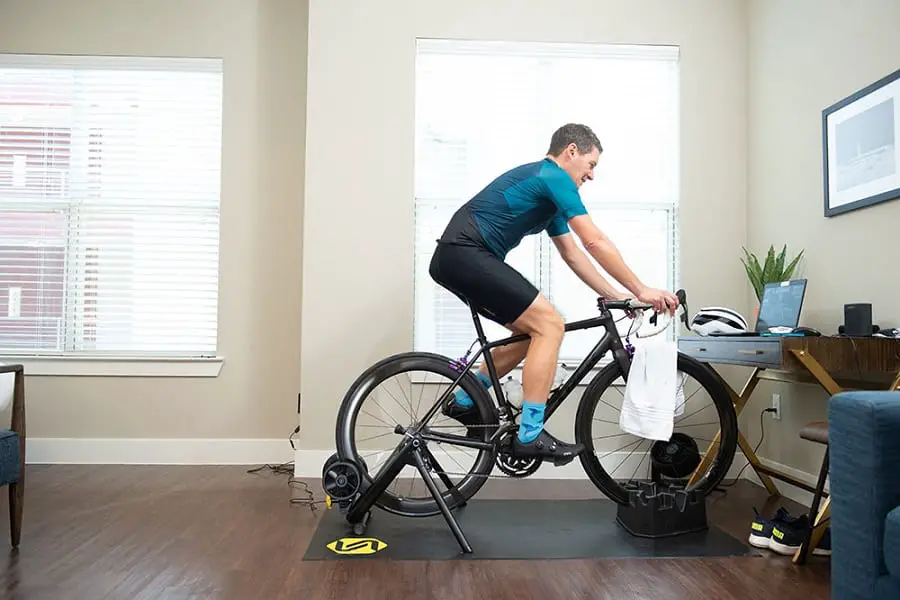Nothing really compares to riding a bike on the streets, feeling the wind in your hair, and the rush in your heart, as the neighborhoods and sceneries fly by around you.
But busy people are often forced to ride indoors. Which is the best, riding a stationary bike vs trainer vs an actual bike?
The adrenaline rush, with the blood pumping through your muscles and your legs working to push you forward, is a feeling that nothing much can compare to. There are a few other ways of exercising that are as effective as they are entertaining.
Bikes aren’t only ridden as a form of exercise but also as a means of transport. They are small, fast enough, and let you travel short distances without using up any fuel.
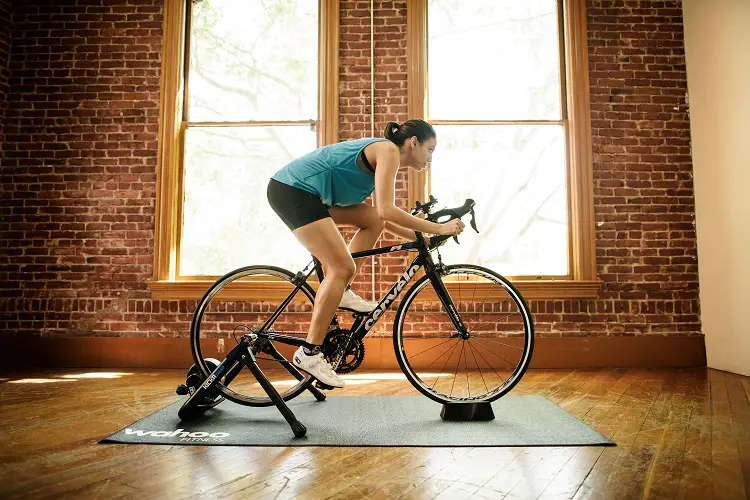
In recent years, the use of bicycles to travel has been encouraged around the world, because they are one of the most environmentally friendly options available. They take up no fuel and no energy (well, no fuel, anyway).
But alas, not everybody has the alternative of riding bikes outside. For some, it is just not possible due to a number of reasons, including insufficient infrastructure, safety concerns, and lack of time or other personal reasons.
Such people should not be devoid of the joys of biking because of reasons outside their control.
Luckily, we do have indoor options for people who can’t bicycle outside. Indoor bikes do exist that allow you to feel like you are riding a bike without going out for it. Such options are more convenient for some people and saves them time and effort.
Bike riding is a hobby, exercise, and activity that should be accessible to all.
Though there is a world of difference between riding a bike outside or inside, either one appeals to people for various reasons.
Here is a fair comparison between indoor bike training and outdoor ones, so you can decide which one suits your lifestyle, routine, and preference better.
Contents
Indoor bike training options
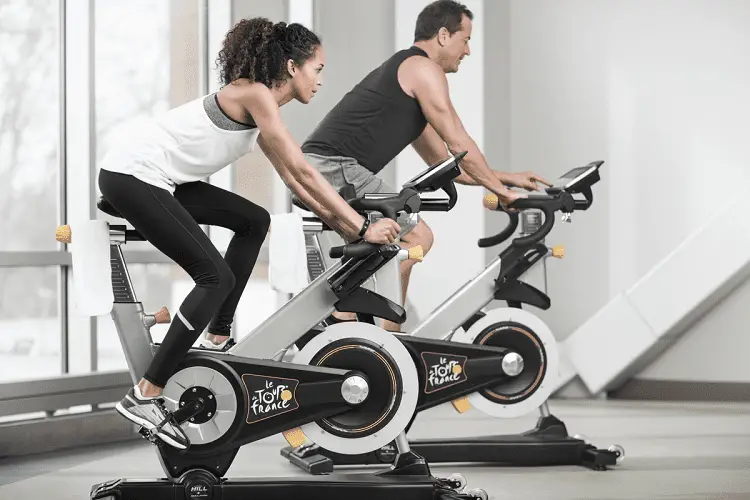
Indoor bike training or cycling is also often called spinning. Indoor bike training focuses on building endurance, strength, high intensity, and recovery. While you don’t get to enjoy the outdoor air while doing it, there are certainly many pros of bike training indoors.
Some of the obvious ones include not having to ride through dark, unsafe roads and alleys, no traffic dangers, no junk miles, and no bad road conditions and commitments at home that don’t allow you to leave the house.
You can ride your indoor bike at whatever time you please, and for however long you want.
For biking indoors, the two most common options are stationary bikes and bike trainers. Both of these are machines meant to mimic the motions of the outdoor bike. They are affordable and portable, and they fit inside homes, offices, and gyms, wherever you please.
Stationary Bike
A stationary bike is an exercise device that means to give you the same experience and effort that you make on an actual outdoor bike.
It is designed similarly with saddles, pedals, and other bicycle gear. The only thing that’s missing is, of course, the wheels, as the stationary bike is not supposed to move.
A stationary bike can let you incorporate some level of exercise into your busy routine, and keep those muscles in good shape. Riding a stationary bike regularly is a good way to burn fat and calories and keep your heart, lungs, and lower body muscles active and strong.
However, stationary bikes do not give you a high-intensity workout and are low-impact compared to other cardiovascular exercise machines.
They are not as much effort as outdoor bikes either because of the absence of resistance that is provided outside due to wind and other factors.
Bike Trainer
The other alternative for indoor biking is a bike trainer, which is the more preferred method among the two for most people. An indoor bike trainer is significantly different than that of a stationary bike, but many use the terms alternatively.
Bike trainers are motors that attach to road or mountain bikes to offer the necessary resistance that is the essence of outdoor biking. This motor can attach onto any bike and lets the rider enjoy an active, high-impact workout in the comfort of their homes.
Indoor bike trainers can be of various types. They can offer different types of resistance, such as liquid, wind, or electromagnetic.
You can also get smart with your indoor trainers; the latest technologies offer integrated power meters that can customize your workouts according to you and make them more targeted and focused. They can be controlled through your smartphones and allow you to change the training zones too.
Indoor bike trainers are used extensively by professional bikers and racers to stay fit and in practice. They can allow people to adjust settings of their training sessions accordingly and provide an energetic exercise session.
Pros and Cons of Stationary Bikes and Bike Trainers
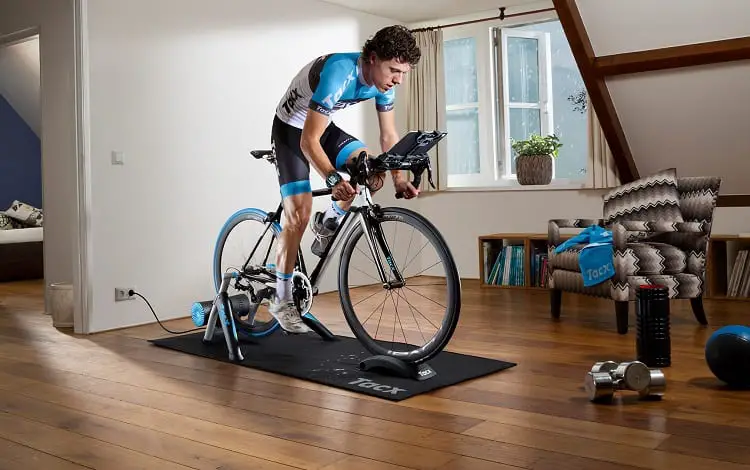
Usage
Stationary bikes are one-size-fits-all.
No matter how many members in your house need to use the stationary bike, they can all adjust the seat and use it accordingly. However, with a bike trainer, individuals may need to haul their bikes up and remove the one that was mounted before.
If the trainer is supposed to be used by just one person, then there is no need to change the bikes, and it can be left on the trainer.
It is advised that you dedicate one bike for the trainer, and keep a separate one for taking outside so that the unnecessary hassle of taking the bike on and off the trainer is avoided.
Setup Time
Since the stationary bike is a relatively simpler machine, it does not need any extra time to be set up or calibrated. You can simply bring it home, unpack it, plug it in and it is good to go.
Because of the more technologically-advanced bike trainers, they are also more complicated to set up. They have to be calibrated with your smartphone devices and need to have their settings adjusted.
Storage
The bike trainer wins on the storage front, as it is easier to take off, disassemble, and out away. The bikes can be unmounted or replaced, and the trainer can be stored away when not in use.
The trainer, at the end of the day, is a small machine and can be placed in a storeroom, pushed beneath the bed, or hauled up out of sight. Since the trainer and the bike divide the weight, they are relatively lighter and easier to transport.
On the other hand, the stationary bike stays in one place generally because it is bulkier, heavier, and larger, making it difficult to move and store. It has a denser metal frame that cannot be moved around too easily.
If you opt for a stationary bike, it is best to designate a space for the bike where you work out and not move it much unnecessarily. The extra weight does give it much more stability but takes away from its portability.
Resistance
The resistance options for stationary bikes are wind, electromagnetic, and direct contact. Direct contact is quite common, but it is also more susceptible to breakage because of the mechanical rubbing for resistance.
They also don’t feel much like outdoor riding. Electromagnetic resistance is a better option with stationary bikes as it is quieter, and doesn’t damage the machine as easily.
With bike trainers, the resistance sources are liquid, wind, or electromagnetic.
Wind and liquid resistance come somewhat gradually and can be hard to get the hang of. As with stationary bikes, the best resistance comes from electromagnetic, and it also provides the most realistic, road-like experience.
Posture
Most stationary bikes have adjustable seats and other features for a more comfortable bike posture. You can cycle on your stationary bike while reclining, seated upright, or in the traditional bike postures.
You can ride in one posture for a while, and switch to a more comfortable position when you start feeling tired. You can also adjust the heights and other features with stationary bikes.
With a bike trainer, you get the traditional bike pose that you have when riding outside; body hunched over the handlebars. Though it’s more realistic and better prepares you for your professional bike races, etc., it can also tire you out more quickly.
How do indoor exercises compare to outdoor bike riding?
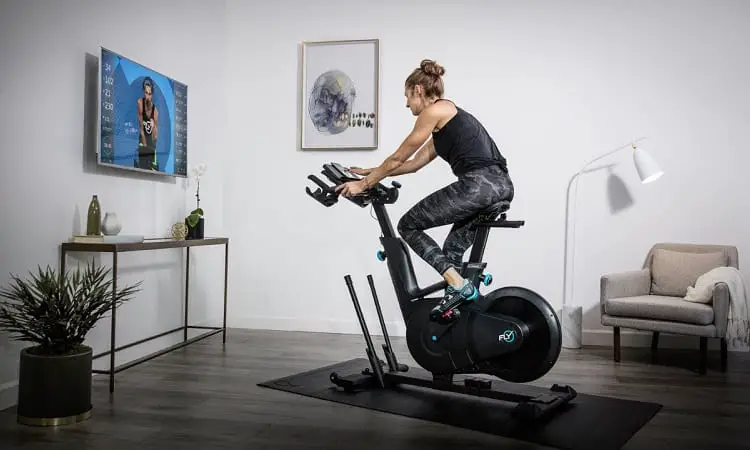
Anybody who has tried both indoor and outdoor cycling unanimously agrees that indoor bike training can never compare to the actual experience of riding a bike outside.
Neither bike trainers nor stationary bikes can possibly give you the same experience, and workout that an outside bike ride can. For what it’s worth, there really is no comparison. Those who have the option of riding a bike outside must do so, for there is no substitute that comes close enough.
Though the experience cannot be the same, as an exercise tool, these indoor options fare fine.
They are great for exercising; different models offer different features and more levels of resistance, so invest in one that has the features that you need. Both indoor and outdoor cycles offer health benefits and
Using both indoor and outdoor biking options simultaneously also seems like a good plan, Go out for an outdoor ride whenever the time and weather allows, but don’t miss out on biking days when it’s raining outside, or you have other things to attend to, with your indoor bike trainers or stationary bikes.
Cost of indoor vs outdoor
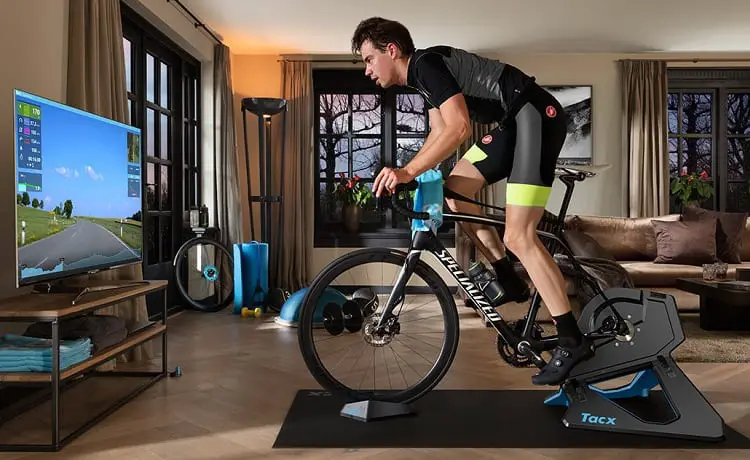
Another very important factor to consider and a metric to compare the bikes are their costs.
No matter what you want, you have a budget that you have to satisfy. Luckily, there are huge cost variations for all of the options, and you can choose one that fits your budget the most.
Trainer/Stationary Bike
Stationary bikes can cost from $250 to $2500.
It depends on the level of workout programs offered, the resistance engines, and additional features. The ones with electromagnetic resistance are generally the highest-priced ones, too, while the wind and direct contact ones are cheaper (though noisier).
Bike trainers can cost almost the same, with some starting from $250 and going up to $3500 for brands such as Wahoo Kicker, which allow you to seamlessly integrate the machine with apps such as Zwift and Trainerroad.
Naturally, the ones with electromagnetic resistance are pricier, as compared to those with liquid or wind.
Additional gear can include sweat mats to protect your floor from the machine, optimal headgear, and platforms that can simulate actual bike riding experiences. The bigger your budget, the more you can play around with the options and accessories.
Traditional Bikes and Accessories
The traditional outdoor bikes are definitely cheaper. Road bikes cost an average of $300-$700, while a mountain bike can cost about $1000 on average. Though the bikes themselves don’t cost much, there are additional accessories that you need to buy if you are cycling outside.
These include bike shorts, jerseys, and gloves that can keep you comfortable in the outside temperatures and provide minimal resistance and maximum efficiency.
These accessories are an additional cost, though not a heavy one. Bike shorts cost about $20, and goggles to wear during rain or harsh weather cost about $5.
All in all, clearly, the outdoor bike riding option is the cheaper of the two. Indoor bike trainers and stationary bikes, though provide many benefits to the riders, are much pricier.
If you have a budget but need an indoor bike, you can possibly get one within your range, however, you will have to compromise on some features. Opt for non-smart trainers, which are great for occasional workout needs but obviously cannot rival their “smarter” counterparts.
The kind of resistance you use will also impact your cost, so choose the wind or fluid resistance. It will be noisier, but that’s a negotiation that you can make for the benefits that indoor cycling allows you.
Conclusion
The complete breakdown of the comparisons between the indoor bike options (bike trainers, stationary bikes) and outdoor riding on a bicycle may help you decide what device you want to invest in.
There is no one good option; different people will find different options more appealing for a variety of reasons. For some, compromising on the outdoor experience may be a complete no-no, but for some who need exercise along with time efficiency might prefer the indoor options.
Whatever you opt for in the end, the only thing that is important is that you get the necessary exercise while having fun within your budget!
Resources:
Last Updated on May 30, 2023 by Danijel Cakalic

